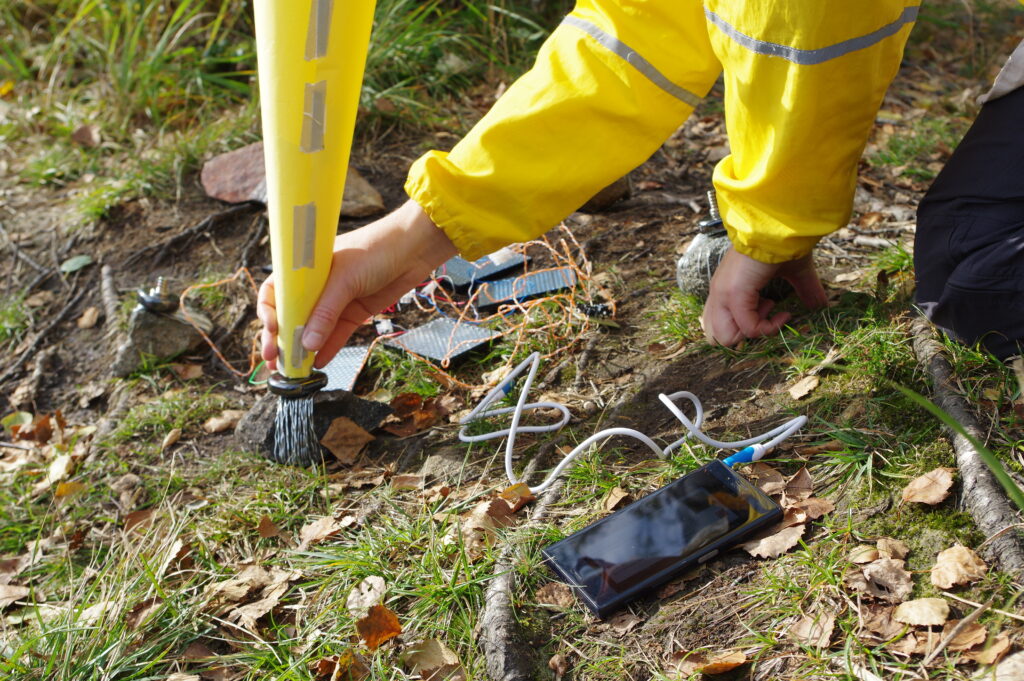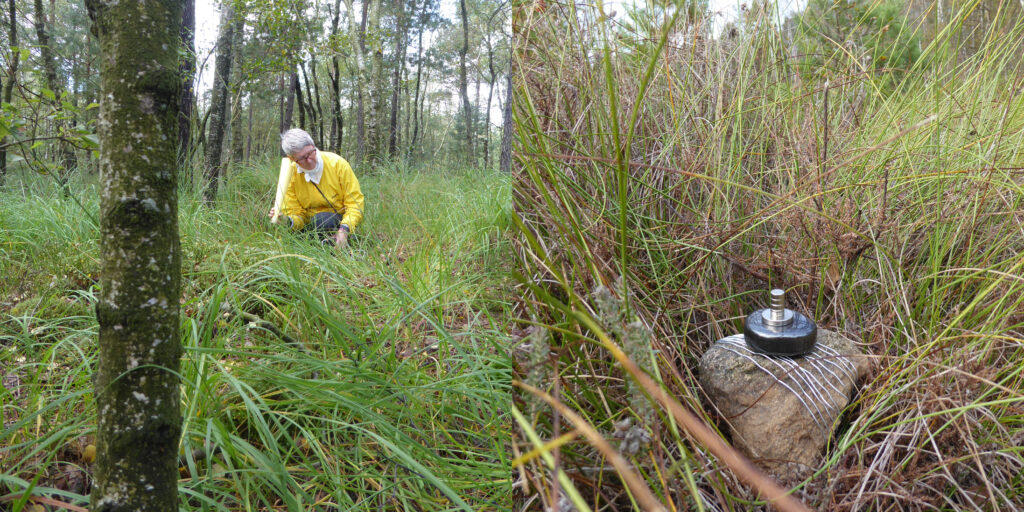Making is traditionally something we connect to arts & crafts. Maker culture has redefined the words make and making to include the conscious introduction of (digital) technology to arts & crafts. The combination of technology, art, and education has been the entry point for Vague Research Studios to journey into the area of making. We are textile material technology specialists, artists, designers, art and technology educators, and researchers, and our interest lies in how technology enters education of art, craft and design.

In our examples of material sound we propose making where the combination of technology, art and education happens through a conscious exploration and use of posthuman theory and methodology agential realism by the physicist and feminist theoretician Prof. Karen Barad. One of agential realism key concepts is intra-action, this concept have been the starting point of this exploration into an outdoor vague event. Intra-action differs from interaction, interaction deals with what is happening in-between already defined entities while intra-action changes this causal order and instead the definitions of entities or phenomenas emerge from relations (Barad, 2003, 2007).

Haunting sound and impossible speakers
In its last example of VRS events the simple speaker element is decomposed into even smaller units, strong magnets an electrical coil and a paper cone. As in the previous examples the performance of sounds could be judged as even of lower quality in terms of volume and other technical qualities. But as in previous cases the material relation with sound is more than a defined technical performance of sound, and in this event even the listening become a challenging event.
You will need a strong magnet or multiple magnets, maybe and amplifier, a (paper) cone, electric cord shaped into a coil using the middle part of the cord. The coil should be made to fit the smaller end of the cone. Use paper tape to hold the cone together and to fasten the coil to the inside of the paper cone end. Connect the cords to the amplifier and connect the amplifier to your mobile phone and go outdoors. Place the magnet somewhere. This placement is where you want your sound to come from. Since they are magnets you can attach them to anything made out of metal. Or if you prefer to attach them to something else you can use metal paper clips or metal string to attach the magnets to other materials. In this case the magnets have been connected to a stone by wiring metallic string around the stone. This means that one part in this experiment is the stone and magnet and the other part is you holding the cone that is connected to the cord carrying electric signals coming from your phone.
Choose a sound in your phone and play it. When the coil/cone is being moved (by you) near the magnet you will start to hear the sound. It will be played with a low volume, to hear better you can hold your ear near the large opening of the cone. This weak but quite distinguished sound adds a haunting quality to the sound playing. The first time we listened to one of our favorite songs we were drawn into listen to it in a different way. We had to make an effort to listen. Our ability to listen became alert. It was as if our memories in relation to the music grew stronger by the lowering of the volume and the eerie thing of having sound appear by just moving a paper cone over a stone in the woods. It reminded us of the strength and quality of being haunted. That which haunts you stimulates your imagination. The fascination that a paper cone, electric cord and magnet can serve as a speaker made the engagement with the sound stronger. The fascination to hear a loved sound in the outdoor environment also adds to the enchantment. In conventional set up sound easily becomes competitive and listened to in a controlled way diminishing mutual relationality and shutting off the environment.
This example is intentionally making the whole listening vague and embeds you (bodymind) as part of the technology. You become an important part (component) of the speaker. You are the speaker, the speaker is you. It could be said that the desire of controlling and mastering sound is not met with this set up but something else is gained. The listening in this case awakens enjoyment, the value is not to hear music/sound in a correct represented way but to find pleasure and curiosity in listening.
Text from Experimental Material-Digital Art Education by Vague Research Studios by Lena Berglin & Kajsa G. Eriksson, chapter in book ”Critical Digital Making in Art Education” ed. A D. Knochel, C. Liao & R. M. Patton, published by Peter Lang (2021).
